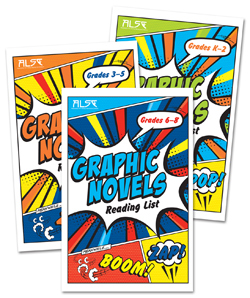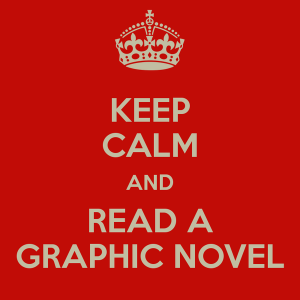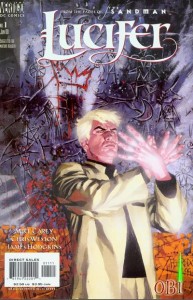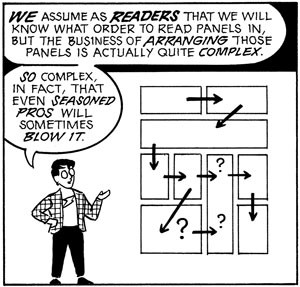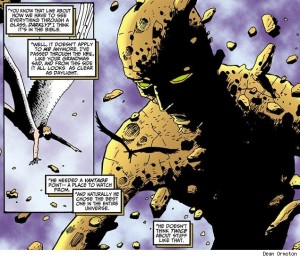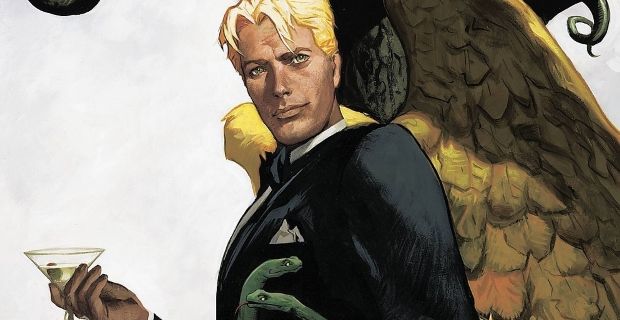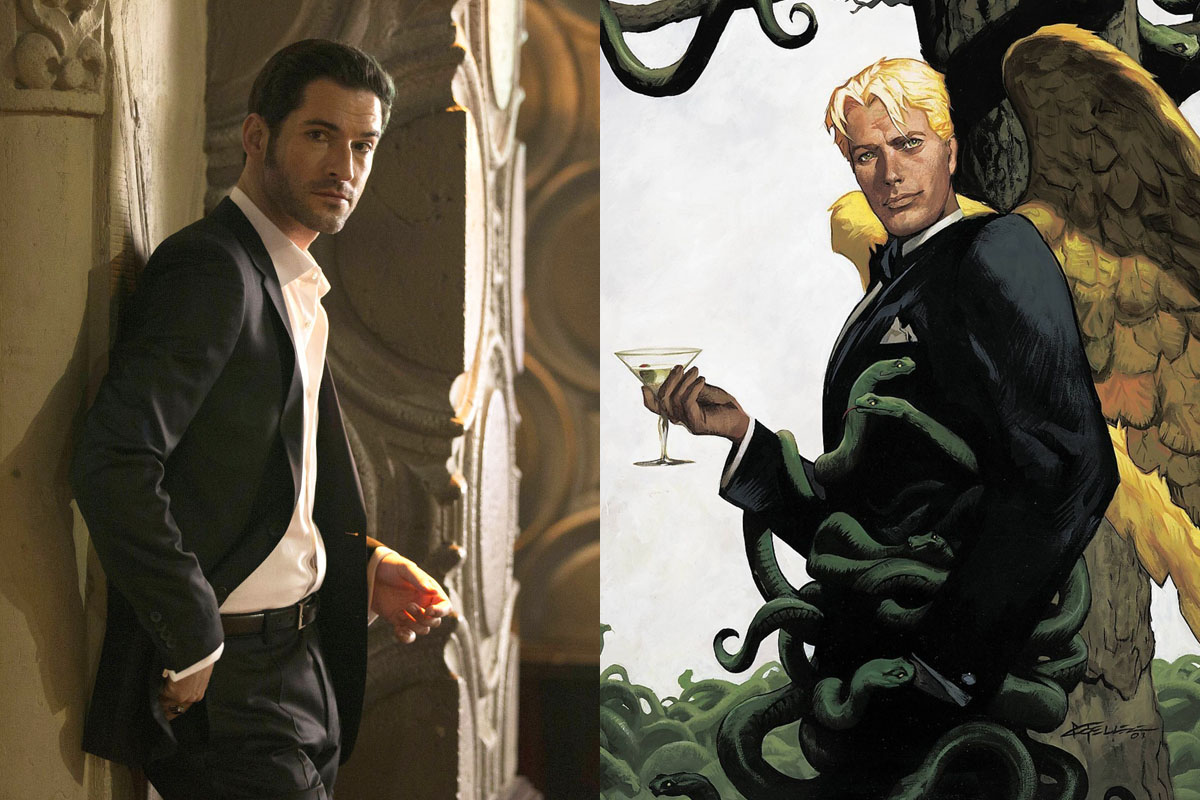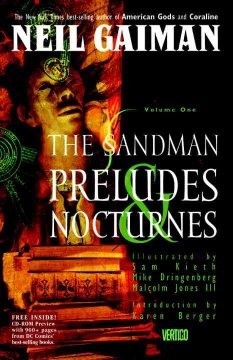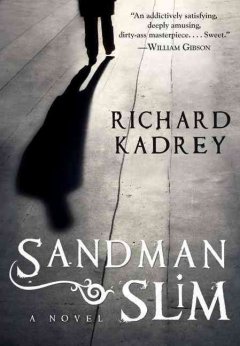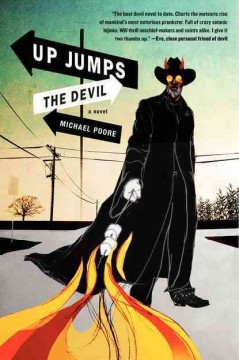Last week, I waxed about on and took a walk down memory lane over Susie Derkins because she was the first female character I encountered in my young reading life that was complex and relatable. In reflecting over last week’s post, I also thought it was significant that some of the most memorable of my early reading experiences, the ones that shaped my views of what reading could be were brought to me through a medium that many don’t even consider “real” reading. I learned valuable lessons about reading through a comic strip, a medium that is more pictures than words. Yet somehow, those experiences with comics still left an indelible mark on me and my future reading life (not to mention a lifelong soft-spot for stuffed tigers).
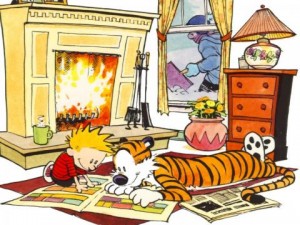
I feel like this would be the perfect time to perch myself up on the soap box and talk about how comics are good for kids, good for readers, just plain good. And they are. There are studies that show kids reading graphic novels and comics are still engaging their minds in the complex thought processes in order to understand the text no less than they do in picture books. Librarians have often pushed for graphic novels in the collections as it has been used a successful method to engage reluctant readers. There are even those who believe that readers who have a difficult time comprehending text can gain confidence by reading graphic novels and comics because the images reinforce what’s happening in the text and aids comprehension. Therefore, this would be a great opportunity to talk about graphic novels and how they are amazing segues for people (both adults and children) who simply don’t always think in linear terms, about how the artwork represents a story in and of itself and can lead to an appreciation of so-called “higher art”. This would be a great time for all that except for one small problem… I have the hardest time reading graphic novels.
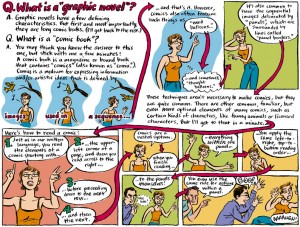
For me, it may be that for a long time, I associated graphic novels and comic books with topics that I had no interest in, such as superheroes or galactic battles. So when I was a kid, I went straight for traditional books and never really “learned” to read graphic novels. I’m also very much a linear thinker; I think in terms of cause and effect and in step-by-step processes to reach a goal (no matter how many steps there may be in that process). So as an adult, with linear thought processes and linear reading experiences, I’ve found myself somewhat cut off from the ever-expanding world of graphic novels, despite their now having extensive content that does interest me.
Similar to our blogger-in-residence Arabella (who apparently linked minds with me this week on the topic of graphic novels – seriously this similarity was completely unplanned), I have made some attempts to rectify this in recent months because now I feel like I’m missing out on something. There are just too many graphic novels out there with amazingly cool concepts, characters, themes and stories for a bookworm like myself to remain segregated from this wealth of possible reading material. I’ve started with things similar to what I know and are familiar with, including books that are more like compiled comics, hearkening back to the bound Calvin and Hobbes collections of my youth. This has at least gotten me back into the groove of reading panels and words together. Also, much like my recommendations of easing past metrophobia, I also started with graphic novels designed for kids. Soon I hope to break down the barriers leading into some more content-heavy graphic novels.
If, like me, you’re looking to start somewhere to test the waters of more graphic formats of books, here are some options that might guide you:
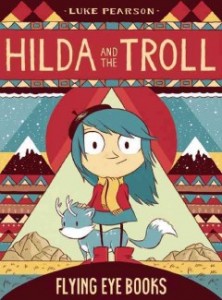 Hilda and the Troll by Luke Pearson
Hilda and the Troll by Luke Pearson
This may be intended to be a graphic novel geared towards children, but this book is AMAZING, regardless of your age. Hilda is a little blue-haired girl who encounters magic in her intrepid adventures to explore her world. Pearson has turned Hilda into a series which are all equally amazing. This is a great introduction to graphic novels as it’s straightforward in terms for story, but visually detailed and engaging without getting too disorienting in terms of varying format. And if you get courage from this series, you might want to give Luke Pearson’s adult work Everything We Miss a try, because that looks pretty amazing, too.
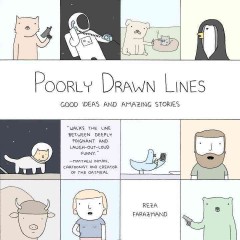 Poorly Drawn Lines by Reza Farazmand
Poorly Drawn Lines by Reza Farazmand
This book is decidedly adult, dealing with themes and language that children should not really be entertaining, but it’s also decidedly funny in an absurdly poignant way. If you’re a fan of The Oatmeal, this collection will most likely appeal to you. This is more on the comfort level of those whose forays into comics have been, like me, largely the Sunday funnies. But while most of these comics are episodic, some of them have storylines spanning pages, which means you have to get a bit more involved than the usual 4-panel strip to hit the punchline, so you’re getting a bit more practice in reading in a longer graphic format.
 Step Aside Pops by Kate Beaton
Step Aside Pops by Kate Beaton
Beaton also writes comics, so this is less of a graphic novel and more of a bound collection of comics. However, Beaton’s illustrations (which are wildly detailed and yet still “cartoony” black-and-white sketches) easily have as much detail as some graphic novels, so it’s a good way to ease into detailed illustrations where there’s a lot going on, but in a familiar format. Her comics are often historical or feminist-based but they are all pretty hysterical. Plus, they have the added side-benefit of making you feel smarter for reading it because she takes actual, historical situations as material. So you either feel smarter for having recognized the historical characters, or feel smarter for now having the most basic introduction to talking about that historical situation.
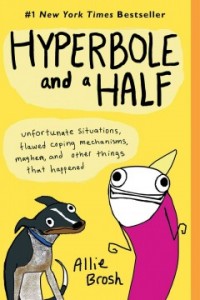 Hyperbole and a Half by Allie Brosh
Hyperbole and a Half by Allie Brosh
Based on the brilliant website of the same name, Brosh’s book is a collection of wildly poignant essays that manage to be laugh-out-loud hysterical while being exceptionally heartfelt. These essays are more text punctuated by absurd images, but there are some graphic novel elements here as well, particularly when it comes to dealing with incredibly deep subject matter in a visual way. Her depiction of clinical depression is easily one of the most spot-on, heart-wrenching, genius depictions of the disease in literature to date. It’s worth picking up this book for that alone, but there’s a lot of great stuff in here and this could easily be someone’s foray out of “comics” and into other more graphically based books.
 Can’t We Talk about Something More Pleasant by Roz Chast
Can’t We Talk about Something More Pleasant by Roz Chast
I’ve talked about this book before, mostly because it was an incredible reading experience. This was the first “official” graphic novel I read (even though it’s technically a graphic memoir). This takes the graphic format away from the episodic and into an extended narrative told with pictures and words. Chast’s honest and open discussion of the last few years of her parents’ lives is amazing to read and experience. Be prepared to laugh, cry, question and more.
I hope this tentative dip into the world of graphic books is helpful to easing you into the graphic novel format. For me, I feel like it’s built my confidence up enough to tackle something like Neil Gaiman’s Sandman series or Scott Snyder’s Wytches sometime soon. If you’ve had some great (or not-so-great) experiences with graphic novels, we’d love to hear about it in the comments! Until next week, dear readers, I hope you’re able to ease your way into something out of your usual comfort zone.

